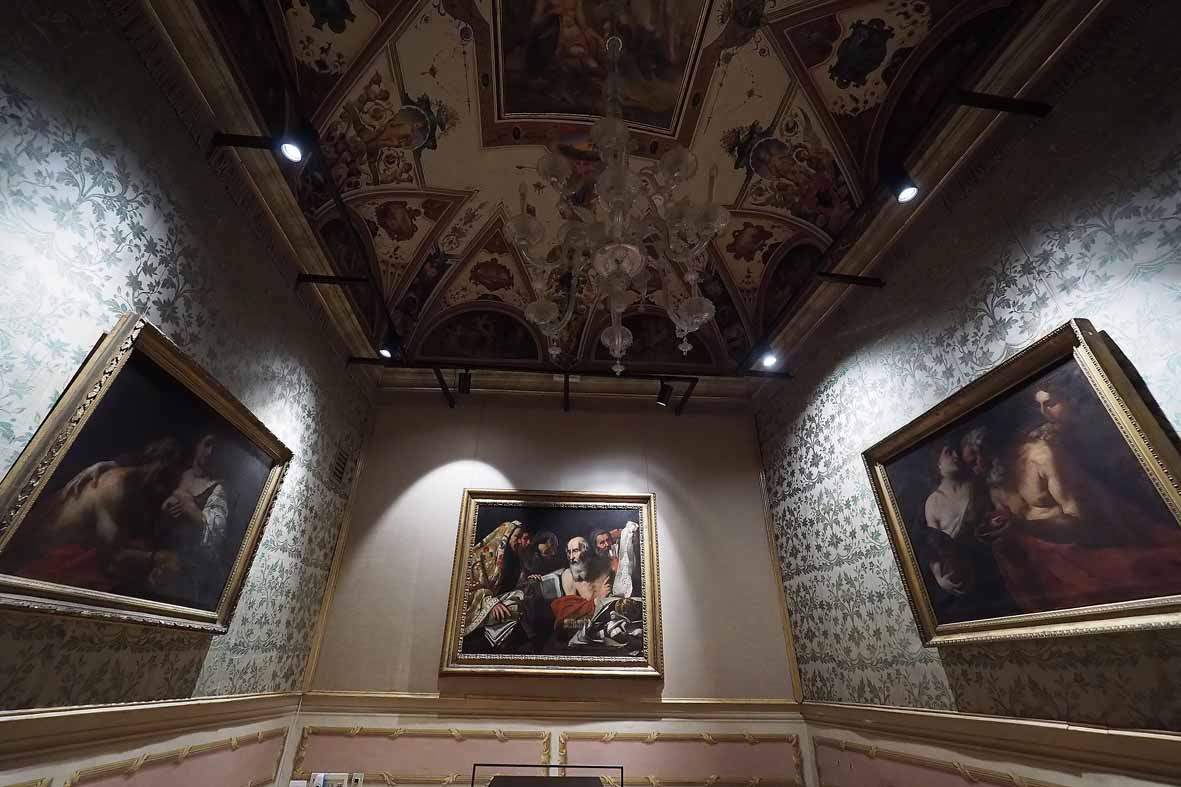Raphael, Canova, Alma-Tadema and others: one hundred masterpieces from the Academy of St. Luke's on a trip to Perugia
One hundred works of art from theAcademy of St. Luke will move to Perugia from Feb. 21 until Sept. 30, 2018, which will host a review of the great masterpieces housed in Rome ’s important art institute founded by Federico Zuccari in 1593 and presided over in the past by great artists such as Gian Lorenzo Bernini, Pietro da Cortona, Domenichino, Giovanni Lanfranco, Domenico Guidi, Giovanni Battista Gaulli, Luigi Garzi, Nicolas Poussin, Simon Vouet, the Cavalier d’Arpino, and many others. The exhibition, entitled From Raphael to Canova, from Valadier to Balla. Art in One Hundred Masterpieces from the National Academy of San Luca, is staged in the spaces of Palazzo Baldeschi and Palazzo Lippi Alessandri, both owned by the Fondazione Cassa di Risparmio di Perugia. This is the second stage of the exhibition already presented between last summer and fall at the Fortress of Bard, in the Aosta Valley.
The exhibition is the result of a collaboration between the CariPerugia Arte Foundation and the National Academy of San Luca. Curated by Vittorio Sgarbi, the exhibition allows visitors to enter the history of the Academy, told through the masterpieces on display: paintings, sculptures, drawings, and sketches that are part of the Academy’s heritage and that the public will see in this Perugian review that alternates works by Raphael, Bronzino, Giambologna, Pietro da Cortona, Guercino, Pieter Paul Rubens, Francesco Hayez, Antonio Canova, Giuseppe Valadier, Giacomo Balla and many other top names. Added to this is a comparison with the Umbrian artistic reality, since the Academy’s works will dialogue with those of the Marabottini Collection, permanently exhibited at Palazzo Baldeschi, as well as with masterpieces from historic Perugia institutions such as the Pietro Vannucci Academy of Fine Arts.
“After a demanding work of excavation, reconnaissance and study,” says curator Vittorio Sgarbi, “we managed to obtain an egregious result. The Academy’s deposits have revealed an artistic heritage of immense value, with many works that are still unknown and waiting to be congruously arranged. The Aosta exhibition and this one in Perugia represent an antecedent to the creation of a new and structured Gallery within the Academy that would enable the enhancement of this heritage by bringing it out of storage and making it available to the public.” The works on display were restored thanks to the support of the Forte di Bard Association.
At Palazzo Baldeschi, the public will see. Raphael’s Putto reggifestone, a detached fresco that belonged to Jean-Baptiste Wicar and was donated by him to the Accademia di San Luca, as well as works by Pietro da Cortona, Paris Bordon, Jacopo da Ponte known as the Bassano, Vincenzo Danti, Giambologna, the Cavalier d’Arpino (present with a Capture of Christ), Pieter Paul Rubens (with the sketch of the Nymphs Crowning the Goddess of Abundance), Anton van Dyck (the Madonna and Child among Musician Angels and related drawing), Sassoferrato, Pier Francesco Mola, and Orazio Borgianni. It will then range over the works of Guercino(Love and Venus), Pietro da Cortona, and Carlo Maratta, to the 18th century with Angelika Kauffmann, Jan Frans van Bloemen, Claude Joseph Vernet, Giovanni Paolo Pannini, and Neoclassicism with Bertel Thorvaldsen and Antonio Canova: a plaster cast, a study for the monument to Pope Clement XIII in St. Peter’s, is on display by the great Venetian sculptor. Also present is a room devoted to architecture with designs for the Pantheon and Piazza del Popolo by Giuseppe Valadier.
The exhibition continues chronologically at Palazzo Lippi Alessandri: starting with Francesco Hayez and Jean-Baptiste Wicar and moving on to the late 19th century with Tranquillo Cremona’s Scapigliatura and the 20th century with Giacomo Balla’s Peasant, Lawrence Alma-Tadema’s self-portrait, Antonio Mancini’s portrait of Giovanni Nicolini, and Amedeo Bocchi’s poetic Portrait of Bianca Standing. Still, Palazzo Lippi Alessandri hosts a rich sculpture section with works by Pietro Tenerani, Antonio D’Este, Nicola D’Antino, Francesco Coccia, Adolfo Apolloni, Attilio Selva, Aroldo Bellini and Alberto Viani.
The exhibition opens every day except Monday (closing day). Tuesday through Thursday from 3:30 p.m. to 7 p.m., Friday through Sunday from 10:30 a.m. to 1:30 p.m. and 3 p.m. to 7 p.m. Admission fees: full 7 euros, reduced 4 euros, free for students under 18. Information at www.fondazionecariperugiaarte.it/.
Pictured: the layout of the exhibition at Palazzo Baldeschi.
 |
| Raphael, Canova, Alma-Tadema and others: one hundred masterpieces from the Academy of St. Luke's on a trip to Perugia |
Warning: the translation into English of the original Italian article was created using automatic tools. We undertake to review all articles, but we do not guarantee the total absence of inaccuracies in the translation due to the program. You can find the original by clicking on the ITA button. If you find any mistake,please contact us.





























